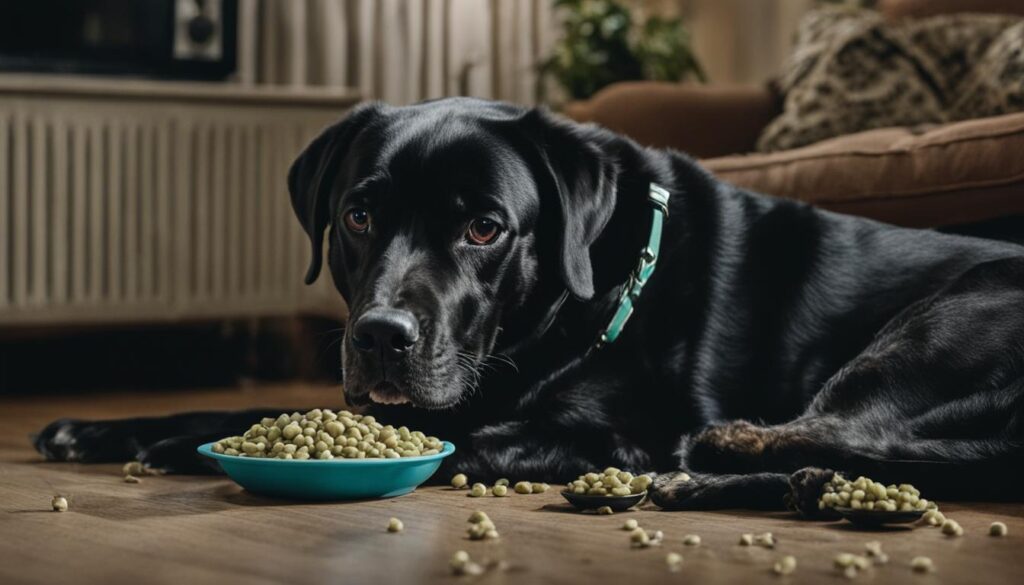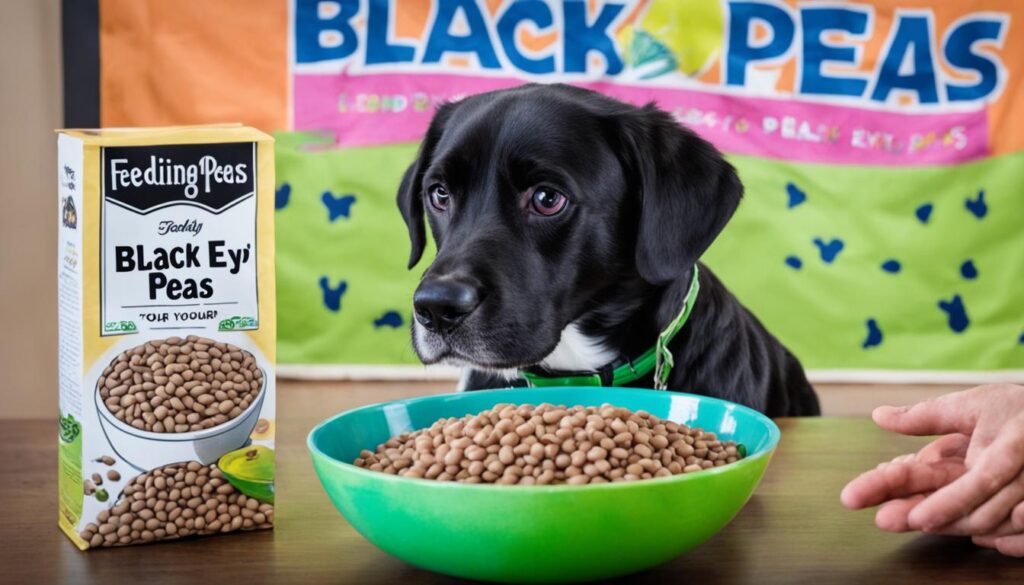Can Dogs Eat Black Eyed Peas?
Have you ever wondered if your furry friend can indulge in the same delicious foods as you? If you’re a fan of black-eyed peas, you may be curious if you can share this nutritious legume with your dog. Well, the good news is that dogs can indeed eat black-eyed peas!
Black-eyed peas are not only safe for dogs but can also provide them with a range of nutritional benefits. They are packed with protein, fiber, and essential nutrients that can support your dog’s overall well-being. However, it’s important to take a few precautions before incorporating black-eyed peas into your dog’s diet.
First and foremost, consult with your vet if you’re considering feeding black-eyed peas to your dog. Your vet can help determine if black-eyed peas are suitable for your dog and ensure there are no underlying allergies or sensitivities.
To learn more about the nutritional benefits of black-eyed peas for dogs and how to safely incorporate them into your dog’s meals, continue reading.
Key Takeaways:
- Black-eyed peas are safe for dogs to eat, but consult with your vet first.
- Black-eyed peas provide dogs with protein, fiber, and essential nutrients.
- Prepare plain, cooked black-eyed peas without any added seasonings.
- Monitor your dog’s reaction to black-eyed peas and introduce them slowly.
- If your dog doesn’t tolerate black-eyed peas, try alternative legumes like green beans or snap peas.
Nutritional Benefits of Black Eyed Peas for Dogs
Black-eyed peas are a nutritious addition to your dog’s diet. They offer a range of essential nutrients that can support your dog’s overall well-being. Incorporating black-eyed peas into your dog’s meals can provide them with the following nutritional benefits:
- Protein: Black-eyed peas are high in protein, which is crucial for maintaining strong muscles and promoting healthy growth and development in dogs.
- Fiber: The fiber content in black-eyed peas aids in digestion and can help regulate bowel movements in dogs, promoting a healthy digestive system.
- Calcium: Black-eyed peas are a good source of calcium, which is essential for maintaining strong bones and teeth in dogs.
- Iron: The iron content in black-eyed peas contributes to healthy blood circulation and the production of hemoglobin in dogs.
- Vitamins: Black-eyed peas contain vitamins A, C, K, and folate, which are important for supporting a dog’s immune system, vision, blood clotting, and cell growth and division.
By including black-eyed peas in your dog’s diet, you can provide them with these essential nutrients, contributing to their overall health and well-being. However, it is crucial to introduce black-eyed peas gradually and in moderation, ensuring that they are safe and well-tolerated by your dog.
| Nutrient | Amount per 100g |
|---|---|
| Protein | 6.7g |
| Fiber | 5.0g |
| Calcium | 36mg |
| Iron | 1.9mg |
| Vitamin A | 16μg |
| Vitamin C | 1.0mg |
| Vitamin K | 1.8μg |
| Folate | 42μg |
Keep in mind that the nutritional content may vary slightly depending on the cooking method and preparation of the black-eyed peas.
Risks of Dogs Eating Black Eyed Peas
While black-eyed peas are generally safe for dogs, it’s important to be aware of the potential risks associated with feeding them to your furry friend. Every dog is unique, and their individual sensitivities and preferences can vary. Here are a few considerations when it comes to black-eyed peas and your dog:
- Some dogs may not like the taste of black-eyed peas.
- There is a possibility of allergies to black-eyed peas.
- Consuming large quantities of black-eyed peas can lead to constipation in dogs.
If your dog shows any negative reactions or experiences digestive issues after eating black-eyed peas, it’s best to discontinue feeding them this legume. Remember, your dog’s well-being is the top priority, and alternative options are available to ensure a balanced and safe diet.
Alternative Legumes for Dogs
If black-eyed peas aren’t suitable for your dog or you’re looking for variety in their diet, consider incorporating these alternative legumes:
- Green beans
- Snap peas
- Lima beans
- Snow peas
These legumes are generally safe for dogs and can provide similar nutritional benefits as black-eyed peas. Just like with any new food, introduce these legumes gradually and monitor your dog’s reaction. Consulting with your vet is always a good idea before making any dietary changes.
| Legume | Nutritional benefits |
|---|---|
| Green beans | High fiber content, vitamin A, vitamin C |
| Snap peas | Good source of Vitamin K, folate, and antioxidants |
| Lima beans | Rich in dietary fiber, protein, and iron |
| Snow peas | Vitamin C, vitamin A, and fiber |

Remember to always prioritize your dog’s health and individual needs when considering their diet. Consulting with your vet is the best way to ensure that you’re making informed choices to support their well-being.
How to Feed Black Eyed Peas to Dogs
When it comes to feeding black-eyed peas to your furry friend, it’s essential to follow the right steps. By preparing them properly, you can ensure your dog’s safety and enjoyment. Here are some tips on introducing black-eyed peas into your dog’s diet:
- Choose the right peas: Opt for plain, cooked black-eyed peas as they are the safest option for your dog. Avoid using canned versions that contain added sodium, which can be harmful to dogs.
- Avoid seasonings: Refrain from adding any seasonings to the black-eyed peas. Common seasonings like salt, pepper, garlic, and onion can be toxic to dogs and should be excluded from their meals.
- Start with small amounts: Begin by offering your dog small portions of black-eyed peas to test their tolerance. Monitor their reaction carefully, observing any signs of discomfort or digestive issues.
- Incorporate into regular meals: If your dog tolerates black-eyed peas well, you can gradually incorporate them into their regular meals. Mix a small amount of peas into their food and continue to monitor their response.
By following these tips, you can safely introduce black-eyed peas into your dog’s diet. Remember, it’s essential to consult with your veterinarian before making any significant changes to their food.

Alternatives to Black Eyed Peas for Dogs
If your dog does not tolerate black-eyed peas or you want to provide them with a variety of legumes, there are alternative options. These alternative legumes for dogs are safe foods that can be cooked and served alongside your dog’s regular meals, adding nutritional variety to their diet. Here are some alternative legumes that you can offer to your furry friend:
- Green beans
- Snap peas
- Lima beans
- Snow peas
These legumes are safe for dogs to eat and offer similar nutritional benefits to black-eyed peas. They are rich in vitamins, minerals, and fiber, which can support your dog’s overall health and digestion. The variety of textures and flavors provided by these legumes can also make mealtime more exciting for your dog.
When preparing the alternative legumes for your dog, make sure to cook them plain without adding any seasonings, as some seasonings, like salt and onion, can be harmful to dogs. It is always recommended to consult with your veterinarian before making any dietary changes for your pet.
By incorporating these alternative legumes into your dog’s diet, you can ensure that they receive a balanced and diverse range of nutrients while enjoying their meals.

Adding alternative legumes to your dog’s diet can provide nutritional variety and support their overall well-being.
Conclusion
In conclusion, adding black-eyed peas to your dog’s diet can be a healthy choice. These legumes offer a variety of nutritional benefits, including protein, fiber, and essential vitamins. However, it is crucial to introduce them slowly and in moderation, closely monitoring your dog’s response.
Before making any dietary changes for your dog, it is always advisable to consult with your veterinarian. They can provide personalized guidance based on your dog’s specific needs and any potential allergies or sensitivities they may have.
Remember, each dog is unique, and what works for one may not work for another. If your dog shows any signs of discomfort, digestive issues, or adverse reactions after consuming black-eyed peas, it is best to discontinue feeding them and explore alternative legumes that may better suit their individual needs.
Ultimately, by paying attention to your dog’s well-being and working closely with your veterinarian, you can make informed decisions about their diet and ensure their overall health and happiness. So, while black-eyed peas can offer nutritional benefits, always prioritize your dog’s specific dietary requirements and consult with your vet to find the best options for them.
FAQ
Can dogs eat black eyed peas?
Yes, black-eyed peas are generally safe for dogs to eat in moderation.
What are the nutritional benefits of black-eyed peas for dogs?
Black-eyed peas are a good source of protein, fiber, calcium, and iron. They also contain vitamins A, C, K, and folate.
Are there any risks associated with dogs eating black-eyed peas?
Some dogs may not like the taste of black-eyed peas or have allergies to them. Consuming large quantities can also cause constipation.
How should I feed black-eyed peas to my dog?
It is best to prepare plain, cooked black-eyed peas without any seasonings. Start with small amounts and monitor your dog’s reaction.
Are there alternative legumes I can offer my dog?
Yes, you can try green beans, snap peas, lima beans, and snow peas as alternatives to black-eyed peas.


